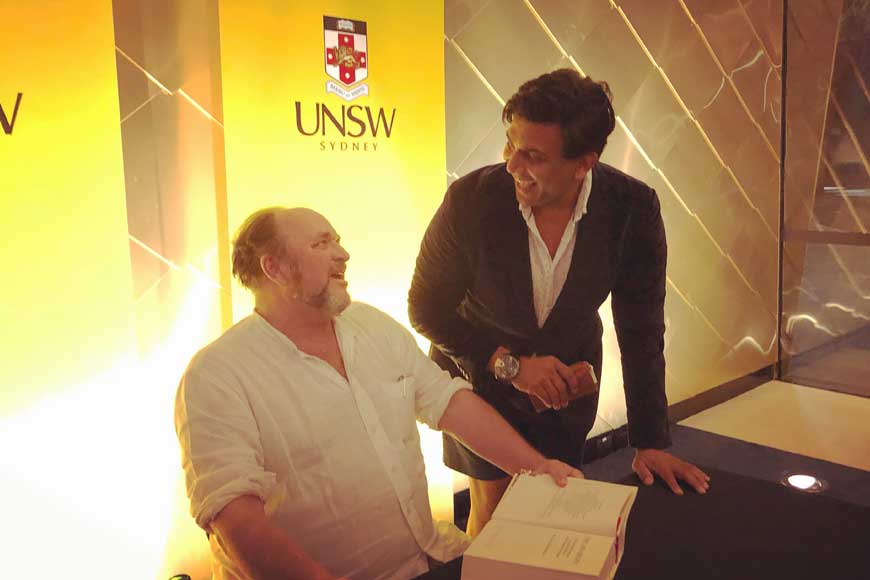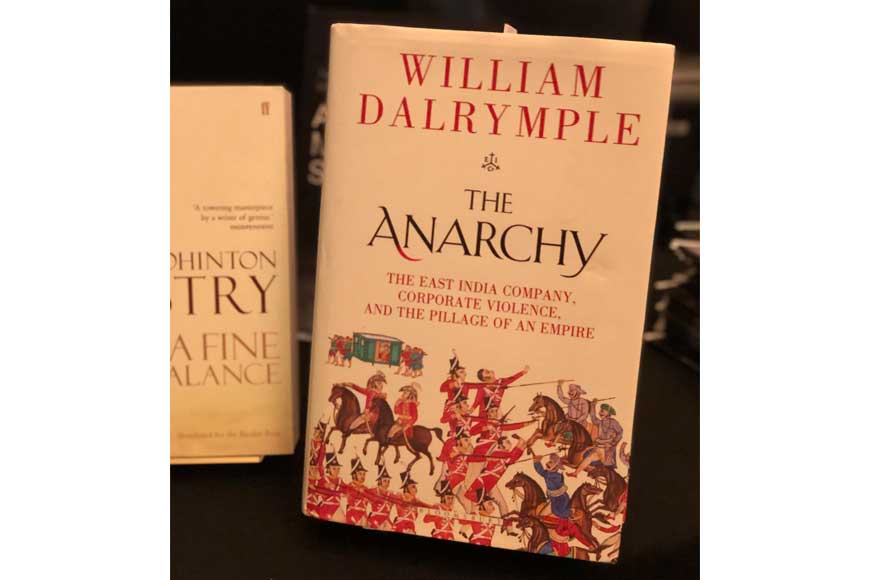When Bengal’s history reaches the shores of Australia through William Dalrymple

I felt privileged to attend University of New South Wales (UNSW) Centre for Ideas’ book launch and presentation on William Dalrymple: The Relentless Rise of the East India Company on 31 October 2019 at the John Clancy Auditorium. As I entered the auditorium, it was over-crowded, almost like the Eden Garden Stadium during a T20 cricket match. That showed the enthusiasm amongst all in Australia to know more about Kolkata and Bengal.
William who has authored many books such as Return of the King (Return of a King told the story of British military misadventure in Afghanistan between 1839 and 1842) was the star of the evening. His latest book The Relentless Rise of the East India Company on India is written extensively about The East Indian Company and its corporate greed. It was similar to our experience of 2008 global financial crisis with the collapse of the American investment bank Lehman Brothers.

As far as history is concerned, The East India Company set on for India with 35 staff and a small office in London. Finally, they ended up looting the entire wealthy nation with GDP of 37% as second choice. The Company’s first choice was Indonesia for spice trade and India second choice for textile trade. In India, The Company was active in Madras with trade and commerce but as Bengal was the star performer with its textile trade, it made its way to Bengal. It was the textile of Bengal that was the target of The Company just like the Danish, French and Dutch.
Before, The Company received the permit from Delhi Sultanate to trade in India, India enjoyed a robust trade with Europe. Bankers like G. Das and Jagath Seth made their fortunes. During drought and famine, people were looked after by Maharajas, nawabs and zamindars in over 500 Indian princely states. In Bengal, the treasury house of Murshidabad was like Aladdin’s cave of gold, silver and precious stones as trade grew through textile and the Delhi Sultanate had less control over Bengal.

After The Company set up Calcutta post and started trading from Bengal, Siraj-ud-Daulah, remained the last independent Nawab of Bengal and of his reign marked the start of British East India Company rule over Bengal and later almost all of India. The Company plundered Bengal ruthlessly, played dirty politics and did not care for the people. Corporate greed lead to Bengal famine killing millions. Tax collected from Bengal was never used to look after the people of Bengal and golden Bengal was drained of her enormous wealth. The wealth which is now part of the British heritage, made risk takers like Robert Clive, one of the wealthiest in Europe and helped The Company built shipping docks for naval expansion of United Kingdom which started the growth of settlements in USA, Australia and Canada.
It is amazing to hear from William about Bengal and her heritage of trade and commerce. He has penned in his six years of research an accurate history of Bengal and her strong connection to United Kingdom. To me, the story of The Company is nothing more than first documentation of corporate greed and tug of war between state and corporation. William describes The Relentless Rise of the East India Company as “the supreme act of corporate violence in world history” which still continues across the globe. It also highlights the importance of corporate practice such as ethics, social corporate responsibilities and female empowerment.
I hope a book such as The Relentless Rise of the East India Company can empower younger generations of both male and female corporates and business entrepreneurs for sustainable business future.










